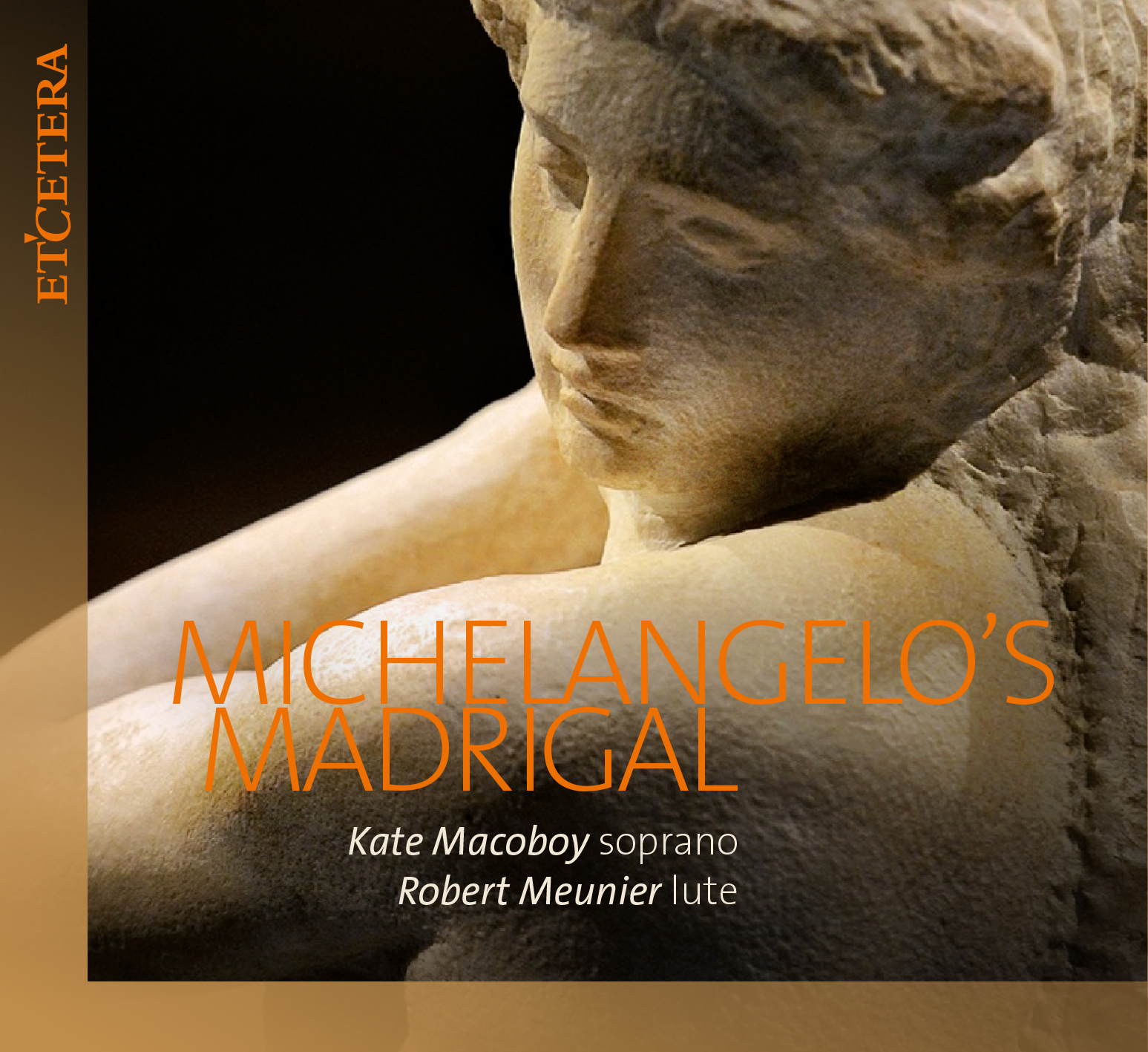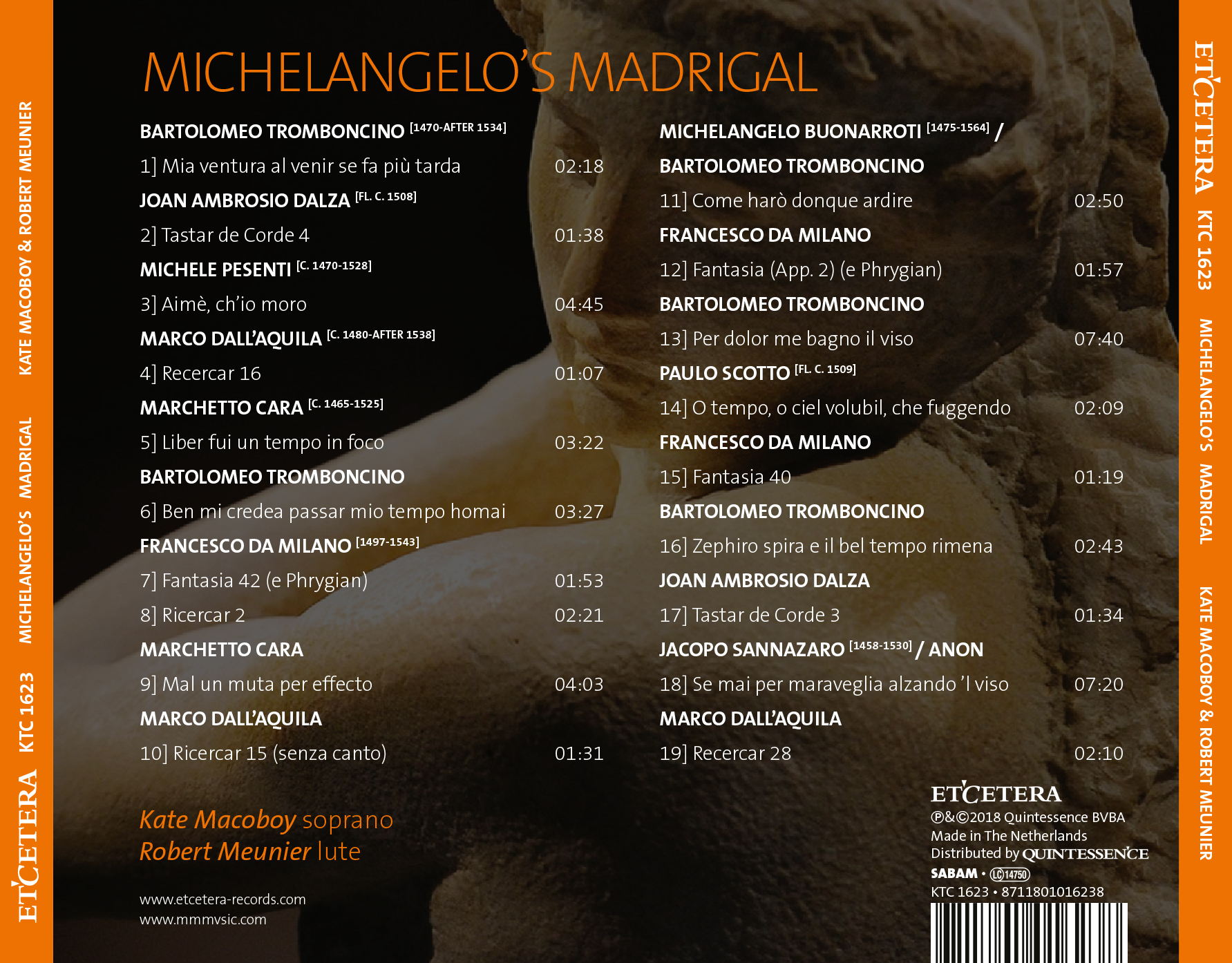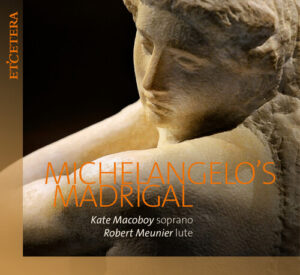1. Mia ventura al venir se fa più tarda
Composer: Bartolomeo Tromboncino
Artist(s): Kate Macoboy, Robert Meunier
2. Tastar de corde 4
Composer: Joan Ambrosio Dalza
Artist(s): Kate Macoboy, Robert Meunier
3. Aimè, ch’io moro
Composer: Michele Pesenti
Artist(s): Kate Macoboy, Robert Meunier
4. Recercar 16
Composer: Marco Dall’Aquila
Artist(s): Kate Macoboy, Robert Meunier
5. Liber fui un tempo in foco
Composer: Marchetto Cara
Artist(s): Kate Macoboy, Robert Meunier
6. Ben mi credea passar mio tempo homai
Composer: Bartolomeo Tromboncino
Artist(s): Kate Macoboy, Robert Meunier
7. Fantasia 42 (E phrygian)
Composer: Francesco Canova da Milano
Artist(s): Kate Macoboy, Robert Meunier
8. Ricercar 2
Composer: Francesco Canova da Milano
Artist(s): Kate Macoboy, Robert Meunier
9. Mal un muta per effecto
Composer: Marchetto Cara
Artist(s): Kate Macoboy, Robert Meunier
10. Ricercar 15 (Senza canto)
Composer: Marco Dall’Aquila
Artist(s): Kate Macoboy, Robert Meunier
11. Come harò donque ardire
Composer: Bartolomeo Tromboncino/Michelangelo Buonarroti
Artist(s): Kate Macoboy, Robert Meunier
12. Fantasia (App. 2) (E phrygian)
Composer: Francesco Canova da Milano
Artist(s): Kate Macoboy, Robert Meunier
13. Per dolor me bagno il viso
Composer: Bartolomeo Tromboncino
Artist(s): Kate Macoboy, Robert Meunier
14. O tempo, o ciel volubil, che fuggendo
Composer: Paulo Scotto
Artist(s): Kate Macoboy, Robert Meunier
15. Fantasia 40
Composer: Francesco Canova da Milano
Artist(s): Kate Macoboy, Robert Meunier
16. Zephiro spira e il bel tempo rimena
Composer: Bartolomeo Tromboncino
Artist(s): Kate Macoboy, Robert Meunier
17. Tastar de corde 3
Composer: Joan Ambrosio Dalza
Artist(s): Kate Macoboy, Robert Meunier
18. Se mai per maraveglia alzando ’l viso
Composer: Anon./Jacopo Sannazaro
Artist(s): Kate Macoboy, Robert Meunier
19. Recercar 28
Composer: Marco Dall’Aquila
Artist(s): Kate Macoboy, Robert Meunier





Reviews
There are no reviews yet.